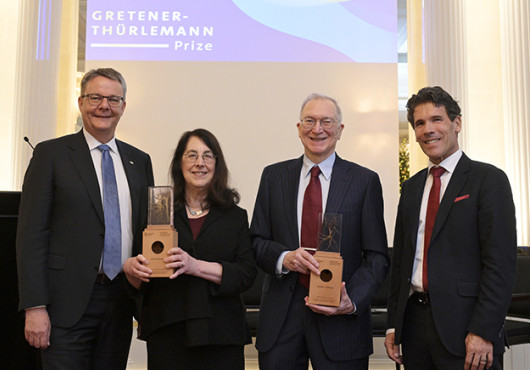
Patients are having difficulty finding or keeping a primary care provider. They’re experiencing long waits to see a doctor, relying more on emergency rooms and urgent care clinics when sick, and having trouble scheduling yearly well visits, which are crucial for managing chronic illnesses and delivering preventive care.
These are the findings of a recently published report by the Massachusetts Health Policy Commission, an independent state agency that aims to improve the affordability of health care for all commonwealth residents.
Many states are seeking innovative ways to shore up primary care. Massachusetts is one of them with a new law that includes provisions to study the primary-care crisis and identify solutions.
For insight into what ails primary care and an update on the search for ways to help, HM News spoke to Zirui Song, faculty director of research at the Harvard Medical School Center for Primary Care, associate professor of Health Care Policy in the Blavatnik Institute at HMS, and an HMS associate professor of medicine and practicing primary care doctor at Massachusetts General Hospital.
Harvard Medicine News: What are the central challenges that primary care faces today?
Song: There aren’t enough primary care physicians. People are having a harder time finding a primary care physician — or a new one when their old one retires — even in areas with many physicians relative to the population. For disadvantaged and rural communities, it can be even more challenging.
This problem will likely get worse unless we can make some systemic changes. Simply put, as the population ages, demand for primary care is growing, but the supply is dwindling. You could point to three key reasons:
One, many primary care practitioners are retiring because of aging and burnout. The average age of U.S. primary care doctors is now 55, with retirement most often at age 65.
Two, some practitioners who stay in primary care are transitioning to newer models of private practice that allow for fewer patients and improved work-life balance.
Three, there aren’t enough U.S. trainees going into primary care to fill these gaps and meet the increased demand.
HMNews: Is there an underlying cause for the burnout and the lack of young practitioners interested in primary care?
Song: Primary care is mostly financed by reimbursements for office visits. Office visits are paid far less, per unit of time, compared with payments for procedures, imaging, infusions, and other physician services. In essence, treating disease pays more than preventing disease.
This disparity drives differences in physician income across specialties, in the resources available to run practices and hire personnel, and historically in nonfinancial rewards such as prestige.
HMNews: What’s at stake with the loss of access to primary care?
Song: Primary care improves health. Losing access makes it harder for people to have a trusted, first stop for care when symptoms or concerns arise, as well as a guide for navigating the journey through the rest of the health care system. At its core, primary care tries to prevent disease, avert complications of chronic disease, and provide a long-term patient-clinician relationship. Good primary care walks through the stages of life with you. It knows you, looks out for you, and is there when you need it. Although primary care is paid less than other specialties, it gives society substantial benefits — both health and economic — if done well. These include healthier kids, healthier workers, and healthier aging. Being a primary care physician is, at heart, an incredibly meaningful and rewarding experience.
HMNews: What are some of the solutions to this crisis?
Song: Finding new solutions is arguably a less urgent priority than creating the conditions to implement solutions we already believe will work — pay primary care more, make administrative and paperwork hurdles smaller, build effective teams, and show the joy and impact of this work to trainees in a compelling way. That said, it’s also important to find ways to measure how well the system is working, to compare different funding and business models, and to make sure that the investments we make in improving primary care pay off in better health for our patients.
HMNews: What are some of the most promising innovations being tried?
Song: Currently, state investments in primary care hold promise. Although evidence on their effects remains in infancy, several states have passed legislation or policies to raise primary care spending. Rhode Island was an early innovator in this area, and they’ve demonstrated increased funding for primary care practices. Colorado, Delaware, Oregon, and California have enacted similar investments in primary care. Other states, including Massachusetts, are also considering bills that aim to improve primary care access and financing.
In addition, there have been some hopeful developments in the ways that health care is paid for. For example, paying provider organizations a population-based budget, rather than a fee for each service. This is thought to give the delivery system more incentives to focus on primary care, because preventing unnecessary health care use allows provider organizations to keep more of their budget as savings — on top of bonuses for doing well on primary care quality measures. In Massachusetts, the MassHealth (Medicaid) program is currently investing in primary care via both increased financing and paying in a similar, “value-based” manner.





